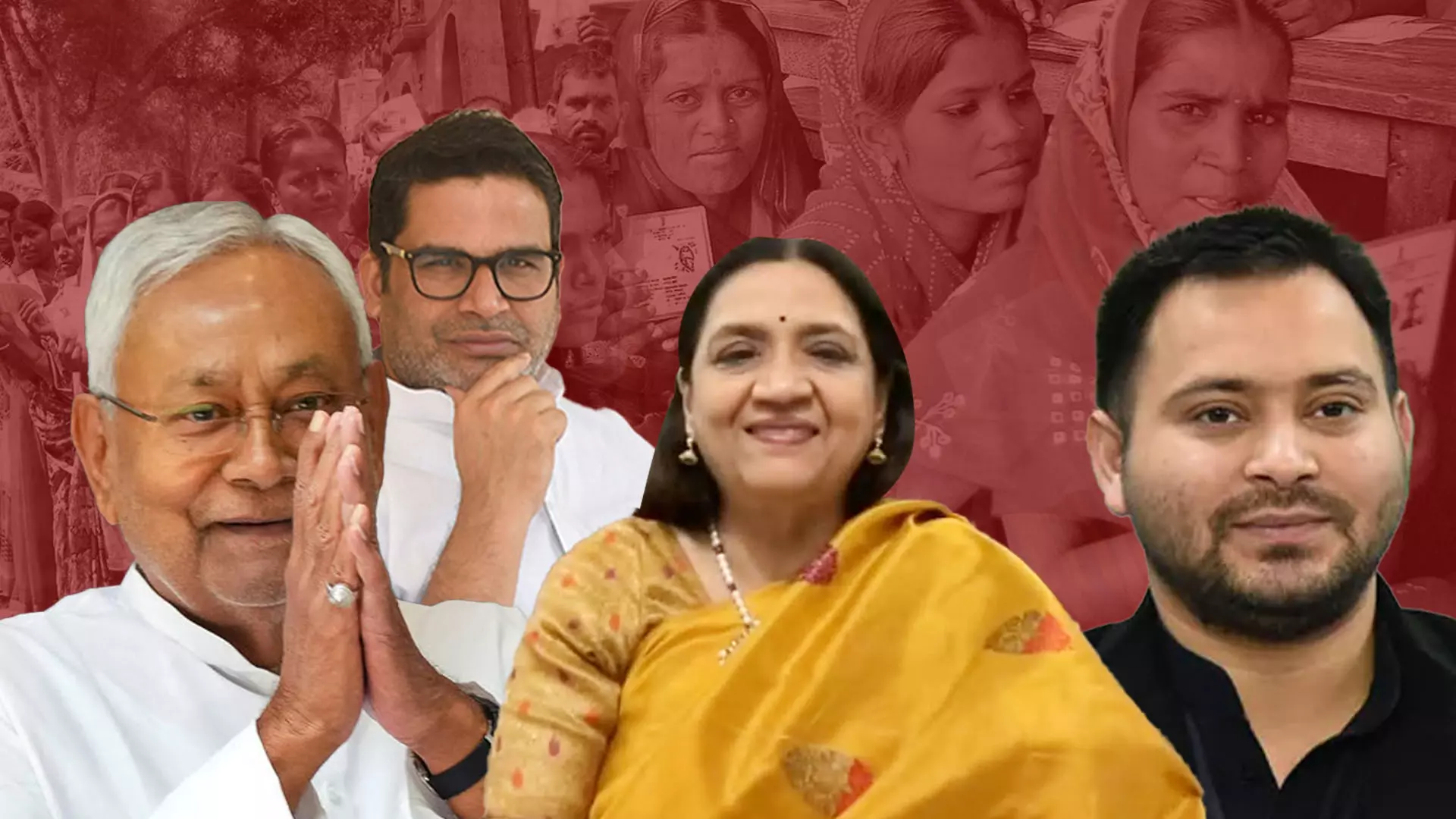
Bihar election 2025: Issues dominate over caste, says Manisha Priyam
Academic and political scientist discusses how livelihood, job security, and education are key voter concerns overshadowing identity politics and SIR process

In the latest episode of YouTube program 'Off the Beaten Track', The Federal spoke with Manisha Priyam, a noted academic, political scientist, and economist, about the upcoming Bihar elections.
She offered insights on voter priorities, key political players, and the implications of recent electoral processes like the Special Intensive Revision (SIR) of voter rolls.
Edited excerpts:
Will this Bihar election be different from previous ones, or will it still revolve around caste and identity politics?
Bihar is one of those states where people actively deliberate about democracy. Historically, Bihar has been a space for democratic experiments, from the ancient republic of Vaishali to movements led by Mahatma Gandhi and Jayaprakash Narayan. These movements have shaped the political thinking of leaders like Nitish Kumar and Lalu Prasad.
While SIR generates discussion, it does not dominate voter sentiment. People are more concerned with livelihood, education, and future opportunities.
Yes, caste remains important, especially because Bihar is largely rural, and rural life is intertwined with caste identity. Even I am identified in my village by family lineages. But when it comes to voting, people prioritise issues over caste. Since 2020, I’ve observed that elections in Bihar have shifted more toward issue-based voting, with identity playing a secondary role.
How is the SIR of voter rolls influencing the electoral discourse?
The electoral landscape had many pressing issues even before the SIR. COVID-19 exposed the vulnerabilities of labourers who were forced to return home, often on foot or by bicycle. Post-pandemic, many continue to struggle with landlessness, job insecurity, and inadequate urban living conditions. Their children are coming of age, seeking government jobs, which has become a central concern.
The SIR itself is not inherently wrong. Accurate voter rolls are essential. But the timing was problematic. Had it been conducted last year, it would have been more credible.
Today, it has created anxieties among voters about whether their votes truly matter, particularly for women and young people whose names were deleted. While deletions might not decisively impact any single party, the process could have been more inclusive and robust.
Do voters feel angry about the SIR process, especially the youth?
There is a general sense of issue-based churning that predates the SIR. The deletions affect some groups, notably women, who are key voters for Nitish Kumar, but the majority remain on the rolls. Therefore, while the SIR generates discussion, it does not dominate voter sentiment. People are more concerned with livelihood, education, and future opportunities.
What does this election mean for Nitish Kumar, Tejashwi Yadav, and Prashant Kishor?
In Bihar politics, there’s no “swan song” for any leader. Nitish Kumar is respected for his governance and leadership, but he is not in his best health and is not actively leading the NDA campaign. Tejashwi Yadav, while popular among youth and his community, still benefits from his father Lalu Prasad's guidance. His challenge is to project himself as a leader with collegiality rather than as a solitary figure.
The performance and strategies of Nitish Kumar, Tejashwi Yadav, and Prashant Kishor will shape both immediate outcomes and future political trajectories in the state.
Prashant Kishor is emerging as a leader rather than a political formation. He has mastered the use of social media and public engagement, effectively highlighting issues and holding the NDA leadership accountable. His influence may capture votes that would otherwise go to the Mahagatbandhan, but his long-term impact will unfold in future elections.
How significant are election-time cash transfers to women voters in Bihar?
Schemes that directly transfer money to women have had mixed results in different states. In Madhya Pradesh, Maharashtra, and Haryana, they helped the BJP, while in Chhattisgarh, similar measures did not yield electoral gains.
In Bihar, it is too early to gauge their impact, especially with festivals like Diwali and Chhath approaching. These transfers might help the NDA, particularly among women from the EBC communities, but it’s too soon to be definitive.
Is communalism a major factor in Bihar elections, given recent statements from BJP leaders?
In Bihar, political issues are predominantly shaped by people’s livelihood rather than communal identity. There are areas with significant minority populations, like Purnia, Katihar, and Saharsa, but Hindus and Muslims largely live separately and pursue their own cultural and economic activities.
The SIR exercise did not find large-scale infiltrations, contradicting claims of demographic threats. Strong regional leadership in Bihar ensures that local issues remain the focus over polarizing narratives.
Bihar’s upcoming elections are a complex interplay of development issues, voter aspirations, leadership perceptions, and electoral processes like the SIR. While caste and identity continue to play roles, issue-based concerns dominate the discourse. The performance and strategies of Nitish Kumar, Tejashwi Yadav, and Prashant Kishor will shape both immediate outcomes and future political trajectories in the state.
The content above has been transcribed from video using a fine-tuned AI model. To ensure accuracy, quality, and editorial integrity, we employ a Human-In-The-Loop (HITL) process. While AI assists in creating the initial draft, our experienced editorial team carefully reviews, edits, and refines the content before publication. At The Federal, we combine the efficiency of AI with the expertise of human editors to deliver reliable and insightful journalism.

